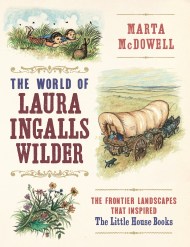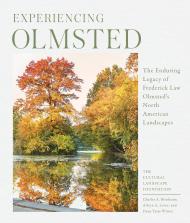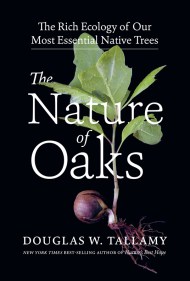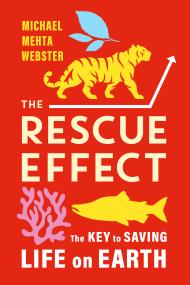Timber Press – Books -Narrative Nonfiction

narrative nonfiction
How can someone who knows nothing about ecological restoration successfully rehab 200 acres of retired farmland? In Bad Naturalist, her self-deprecating, humorous, and thoroughly engaging book, Paula Whyman tells us exactly how.
Douglas W. Tallamy, author of Nature’s Best Hope
When Paula Whyman first climbs a peak in the foothills of the Blue Ridge Mountains in search of a home in the country, she has no idea how quickly her tidy backyard ecology project will become a massive endeavor. Just as quickly, she discovers how little she knows about hands-on conservation work. In Bad Naturalist, readers meander with her through orchards and meadows, forests and frog ponds, as she is beset by an influx of invasive species, rattlesnake encounters, conflicting advice from experts, and delayed plans—but none of it dampens her irrepressible passion for protecting this place. With delightful, lyrically deft storytelling, she shares her attempts to coax this beautiful piece of land back into shape. It turns out that amid the seeming chaos of nature, the mountaintop is teeming with life and hope.
A vivid, many-faceted, and
Booklist
provocative ecological inquiry.
A genre-bending blend of naturalism, memoir, and social manifesto for rewilding the city, the self, and society.
“Brown lives far from any conventional battlefield, but he is surrounded by the wreckage of a different war, and he, too, finds hope in cultivating the ruins of nature…A Natural History of Empty Lots is less a departure from the nature writing tradition than a welcome addition to its edgelands.” —New York Review of Books
A Natural History of Empty Lots is a genre-defying work of nature writing, literary nonfiction, and memoir that explores what happens when nature and the city intersect.
During the real estate crash of the late 2000s, Christopher Brown purchased an empty lot in an industrial section of Austin, Texas. The property—abandoned and full of litter and debris—was an unlikely site for a home. Brown had become fascinated with these empty lots around Austin, so-called “ruined” spaces once used for agriculture and industry awaiting their redevelopment. He discovered them to be teeming with natural activity, and embarked on a twenty-year project to live in and document such spaces. There, in our most damaged landscapes, he witnessed the remarkable resilience of wild nature, and how we can heal ourselves by healing the Earth.
Beautifully written and philosophically hard-hitting, A Natural History of Empty Lots offers a new lens on human disruption and nature, offering a sense of hope among the edgelands.
At once a short story, an essay, and a prose poem, ‘The Island’ reads both like a sketch for The Summer Book and a vignette of Klovharun … the text seems to change following mysterious tides from a timeless present to an urgent past.
Hernan Diaz, finalist for the Pulitzer Prize
In the bitter winds of autumn 1963, Tove Jansson, helped by Brunström, a maverick fisherman, raced to build a cabin on a treeless island in the Gulf of Finland. The island was Klovharun, where for thirty summers Tove and her beloved partner, the visual artist, Tuulikki “Tooti” Pietilä, lived, painted, and wrote, energized by the solitude and shifting seascapes. The island’s flora, fauna, and weather patterns provided deep inspiration which can be seen reflected in all of Jansson’s work, most famously in her bestselling novel The Summer Book and her longstanding comic strip and novels for children, Moomin. Tove’s signature spare, quirky prose, and Tooti’s subtle ink washes and aquatints combine to form a work of meditative beauty, a chronicle of living peacefully in nature and observing the island’s ecology and character. Notes from an Island is both a work of artistic collaboration and an homage to the deep love the two women shared. One feels as if Jansson’s journal, with Tooti’s sketches tucked inside, has been unearthed like a treasure from under a pile of old quilts in the back of their rustic cabin.
Praise for the essay, “The Island”
“At once a short story, an essay, and a prose poem, ‘The Island’ reads both like a sketch for The Summer Book and a vignette of Klovharun … the text seems to change following mysterious tides from a timeless present to an urgent past.” —Hernan Diaz, finalist for the Pulitzer Prize
Praise for Tove Jansson
“It could be said that everything she wrote is, in one way or another, about the creative interactions between art and reality or art and nature.”—The Guardian
“Her style is not at all ‘poetic’—quite the contrary. It is prose of the very highest order; it is pure prose. Through its quiet clarity we see unreachable depths, threatening darkness, promised treasures.”—Ursula K. LeGuin, The Guardian
“Tove Jansson was a genius, a woman of profound wisdom and great artistry.”—Philip Pullman
“It’s hard to describe the astonishing achievement of Jansson’s artistry.”—Ali Smith


personal journeys

Bicycling with Butterflies

Derek Jarman’s Garden

Ms. Adventure

A Natural History of Empty Lots

Psilocybin Therapy

The Return of Wolves

The Shotgun Conservationist

To Speak for the Trees

Something in the Woods Loves You

What We Sow
literary landscapes

Beatrix Potter’s Gardening Life

Emily Dickinson’s Gardening Life

The Natural World of Winnie-the-Pooh

Notes from an Island

A Place Like Mississippi

Unearthing The Secret Garden

Writing Wild

The World of Laura Ingalls Wilder
discover the world around you

The Age of Melt

All the Presidents’ Gardens

Darwin and the Art of Botany

Experiencing Olmsted

Iwigara

Lakes

The Nature of Oaks

Our National Forests

Superconvergence
all about animals

The Insect Epiphany

Octopus

Our Native Bees

The Rescue Effect

The Weird and Wonderful World of Bats
Newsletter Signup
By clicking ‘Sign Up,’ I acknowledge that I have read and agree to Hachette Book Group’s Privacy Policy and Terms of Use



